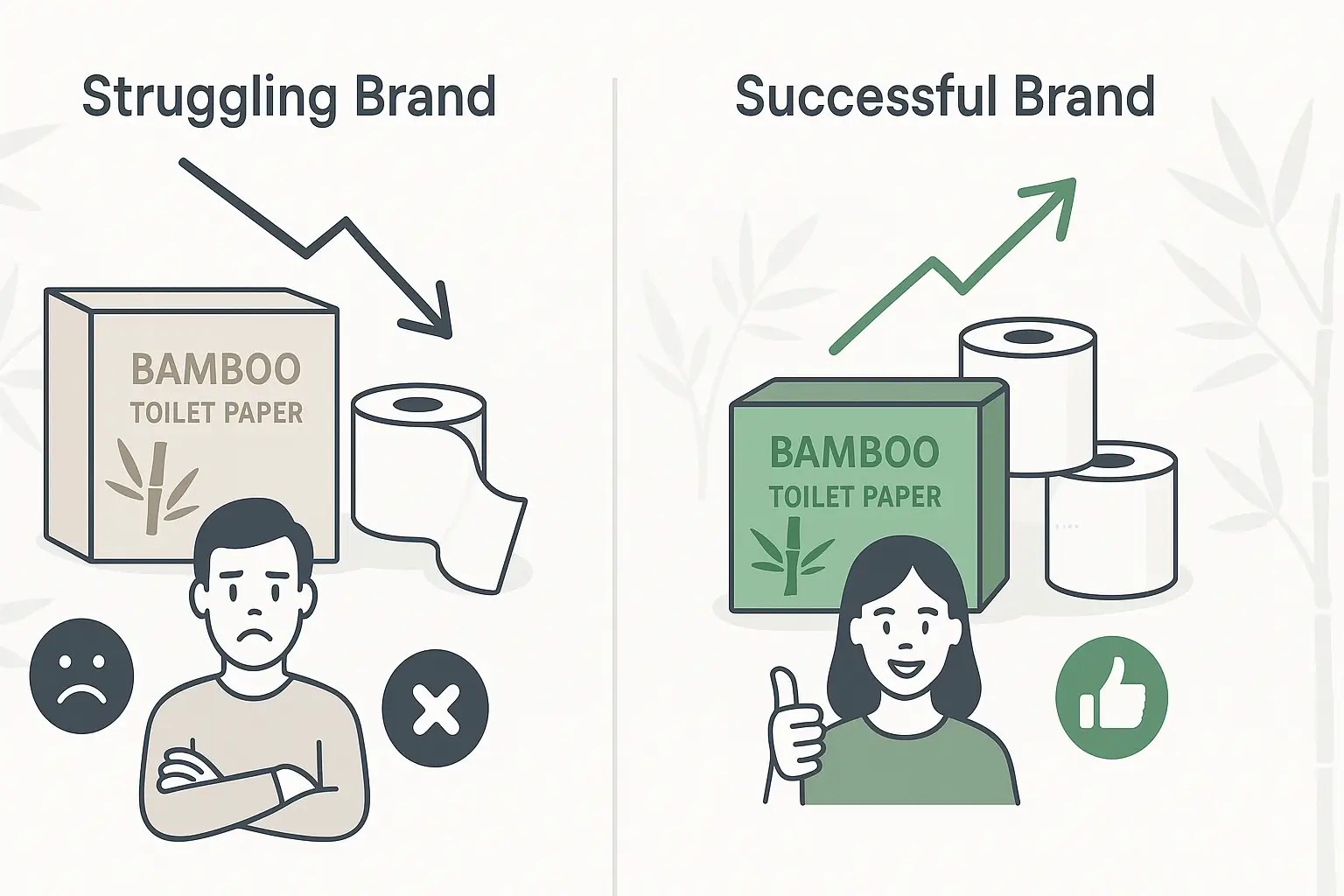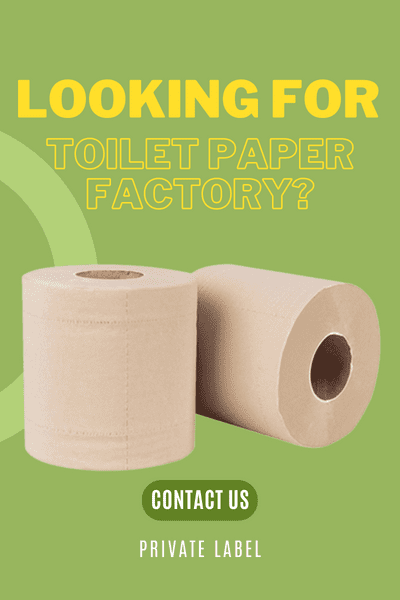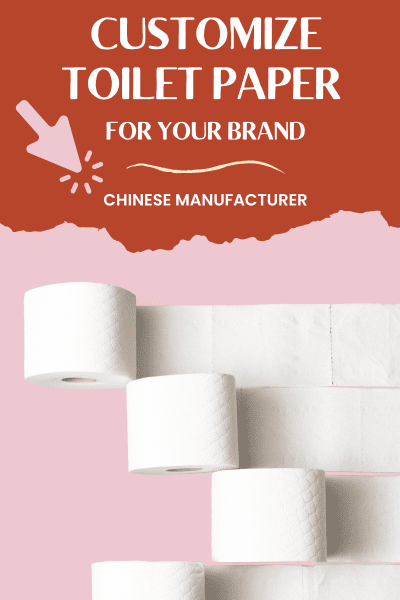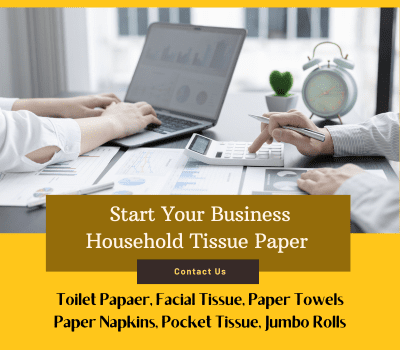
I’ve noticed that bamboo toilet paper brands often face uphill battles in the market. Why? Let’s break it down. First, higher production costs lead to pricier products. Second, the manufacturing process is complex, making it hard to scale. Finally, sourcing enough raw bamboo to meet growing demand remains a struggle. These hurdles can’t be ignored.
Key Takeaways
Bamboo toilet paper costs a lot to make. To do well, brands need to cut costs but keep good quality.
Being honest is very important. Brands should show proof of their eco-friendly actions to gain trust and keep customers.
Good quality matters most. Brands should work on making their paper softer and stronger so people buy it again.
Challenges Bamboo Toilet Paper Brands Face
High Production Costs and Limited Affordability
I’ve seen firsthand how high production costs can hold back bamboo toilet paper brands. The process of turning bamboo into soft, usable toilet paper requires specialized equipment and energy-intensive methods. These costs often get passed on to consumers, making bamboo toilet paper more expensive than traditional options. Many people hesitate to pay a premium, even if they care about sustainability. To succeed, brands need to find ways to lower production costs without sacrificing quality.
Consumer Skepticism About Sustainability Claims
Many consumers question whether bamboo toilet paper is truly as eco-friendly as advertised. I’ve noticed that some brands fail to back up their claims with clear evidence. This lack of transparency creates doubt and makes people less likely to switch from their usual products. To win trust, brands must provide proof of their sustainability practices, like certifications or detailed explanations of their processes.
Variability in Product Quality and Softness
Not all bamboo toilet paper feels the same. Some brands produce rolls that are soft and durable, while others fall short. I’ve heard complaints about rough textures or thin sheets that tear easily. This inconsistency frustrates customers and makes them hesitant to try bamboo toilet paper again. Brands need to prioritize consistent quality to keep customers coming back.
Limited Retail Availability and Market Reach
Finding bamboo toilet paper in stores can be a challenge. Many brands rely on online sales, which limits their reach. I believe expanding into more retail locations would make it easier for people to try these products. Convenience plays a big role in purchasing decisions, and brands that improve availability will have a better chance of success.
Root Causes of Struggles in the Bamboo Toilet Paper Industry
Energy-Intensive Manufacturing Processes
I’ve noticed that producing bamboo toilet paper requires a lot of energy, which drives up costs. The process involves converting raw bamboo into soft, usable paper, and this consumes significant amounts of electricity and fuel. For example:
The energy consumption for lighting in bamboo yards is 8.4 kWhe per hour. Switching to LED bulbs could reduce this to 2.4 kWhe, saving Rs 131,400 annually.
On average, paper production in India uses 34.3 GJ of energy per ton, highlighting how energy-intensive this industry is.
These numbers show how much energy impacts cost efficiency. Brands need to adopt energy-saving technologies to lower expenses and make their products more affordable.
Misleading Sustainability Practices and Claims
Some brands claim their products are 100% bamboo, but I’ve learned this isn’t always true. Investigations by the Forest Stewardship Council (FSC) revealed that some bamboo toilet paper contains other timber fibers. This misrepresentation damages trust. Consumers want to support eco-friendly products, but misleading claims make them skeptical. Brands must ensure transparency and back their claims with certifications to build credibility.
Supply Chain Inefficiencies and Sourcing Issues
The supply chain for bamboo toilet paper has its own set of challenges. Sourcing bamboo often involves importing from Asian countries, which increases shipping costs and the carbon footprint. As the Natural Resource Defense Council points out:
The demand for virgin pulp is harming forests globally. Bamboo and other non-wood fibers are sourced from distant regions, adding to environmental concerns.
Streamlining the supply chain and sourcing locally could reduce these inefficiencies and environmental impacts.
Lack of Consumer Awareness About Bamboo’s Benefits
Many people don’t understand why bamboo toilet paper is a better choice. Bamboo grows quickly and requires fewer resources than trees, making it a sustainable option. However, without proper education, consumers stick to traditional products. I believe brands should invest in campaigns that highlight bamboo’s environmental advantages. When people see the benefits, they’ll feel more confident making the switch.
Solutions to Help Bamboo Toilet Paper Brands Succeed

Streamline Manufacturing to Reduce Costs and Waste
I’ve seen how operational improvements can make a big difference in reducing costs and waste. By adopting lean manufacturing principles and investing in technology, brands can streamline production. For example, using automation reduces errors and speeds up processes. A skilled workforce also plays a key role in identifying inefficiencies. Here’s a breakdown of strategies and their impact:
Strategy | Impact on Costs and Waste |
|---|---|
Skilled Workforce | Enhances productivity and reduces costly errors. |
Employee Contribution | Identifies inefficiencies and motivates continuous improvement. |
Technological Innovations | Streamlines production and reduces operational costs. |
Waste Reduction | Lowers raw material costs by minimizing material waste. |
Lean Manufacturing Principles | Eliminates inefficiencies and minimizes unnecessary costs. |
These changes not only lower expenses but also make bamboo toilet paper more affordable for consumers.
Build Trust Through Transparent Sustainability Practices
Consumers want proof that they’re supporting eco-friendly products. I’ve noticed that brands with certifications like FSC or clear environmental labels gain more trust. Studies show that over 66% of global consumers are willing to pay extra for sustainable brands. Nearly 70% also consider certifications essential when choosing products. Transparency builds loyalty and encourages repeat purchases. Sharing detailed sustainability practices, like sourcing and production methods, can make a lasting impression.
Evidence Type | Description |
|---|---|
Consumer Willingness to Pay | Over 66% of global consumers are willing to pay extra for sustainable brands. |
Importance of Environmental Labels | Nearly 70% of consumers consider environmental certifications essential when choosing products. |
Impact on Brand Loyalty | Brands with certifications like FSC enjoy higher consumer trust and loyalty. |
Focus on Consistent Product Quality and Innovation
Consistency is key to keeping customers happy. I’ve heard complaints about rough or thin bamboo toilet paper, which discourages repeat purchases. Brands should focus on innovation to improve softness and durability. Testing products rigorously before launch ensures quality. Offering premium options, like multi-ply rolls, can also attract a wider audience. When customers know they can rely on a brand, they’re more likely to stick with it.
Expand Distribution Channels and Retail Partnerships
Making bamboo toilet paper widely available is essential. Many people prefer buying products in stores rather than online. Partnering with major retailers can increase visibility and convenience. I’ve seen brands succeed by offering their products in supermarkets, eco-friendly stores, and even subscription services. Expanding distribution channels ensures that more consumers can access bamboo toilet paper easily.
Educate Consumers About Bamboo’s Environmental Advantages
Many people don’t realize how sustainable bamboo is. It grows quickly, requires less water, and doesn’t need pesticides. Educational campaigns can highlight these benefits and encourage consumers to switch. For instance, stricter regulations on single-use plastics have already promoted bamboo as a sustainable alternative. Companies adopting bamboo packaging have also enhanced their reputation. When consumers understand the environmental impact, they feel more confident choosing bamboo toilet paper.
Evidence Type | Description |
|---|---|
Market Growth | The bamboo packaging market is experiencing significant growth, indicating rising consumer interest. |
Regulatory Impact | Stricter regulations on single-use plastics are promoting bamboo as a sustainable alternative. |
Corporate Social Responsibility | Companies are increasingly adopting bamboo packaging to meet sustainability goals and enhance reputation. |
Bamboo toilet paper brands face hurdles like high costs and consumer skepticism. I believe success lies in improving manufacturing, being transparent, and educating consumers. The market reflects a cultural shift toward sustainability, as shown below:
Evidence Type | Description |
|---|---|
Sustainable Raw Materials | Aligns with consumer demand for eco-friendly products. |
E-commerce Accessibility | Makes biodegradable options more accessible to conscious buyers. |
Consumer Education | Drives demand through awareness campaigns. |
Cultural Shift | Indicates growing interest in sustainable hygiene solutions. |
Innovation and trust will shape the future of bamboo toilet paper.
자주 묻는 질문
1. Is bamboo toilet paper really better for the environment?
Yes! Bamboo grows fast, uses less water, and doesn’t need pesticides. Switching to bamboo toilet paper reduces deforestation and supports sustainable practices.
2. Why does bamboo toilet paper cost more than regular toilet paper?
I’ve noticed that production costs are higher due to energy-intensive processes. However, brands are working to streamline manufacturing and make prices more competitive.
3. How can I tell if a bamboo toilet paper brand is truly eco-friendly?
Look for certifications like FSC or detailed sustainability claims. I always check for transparency in sourcing and production methods to ensure credibility.




